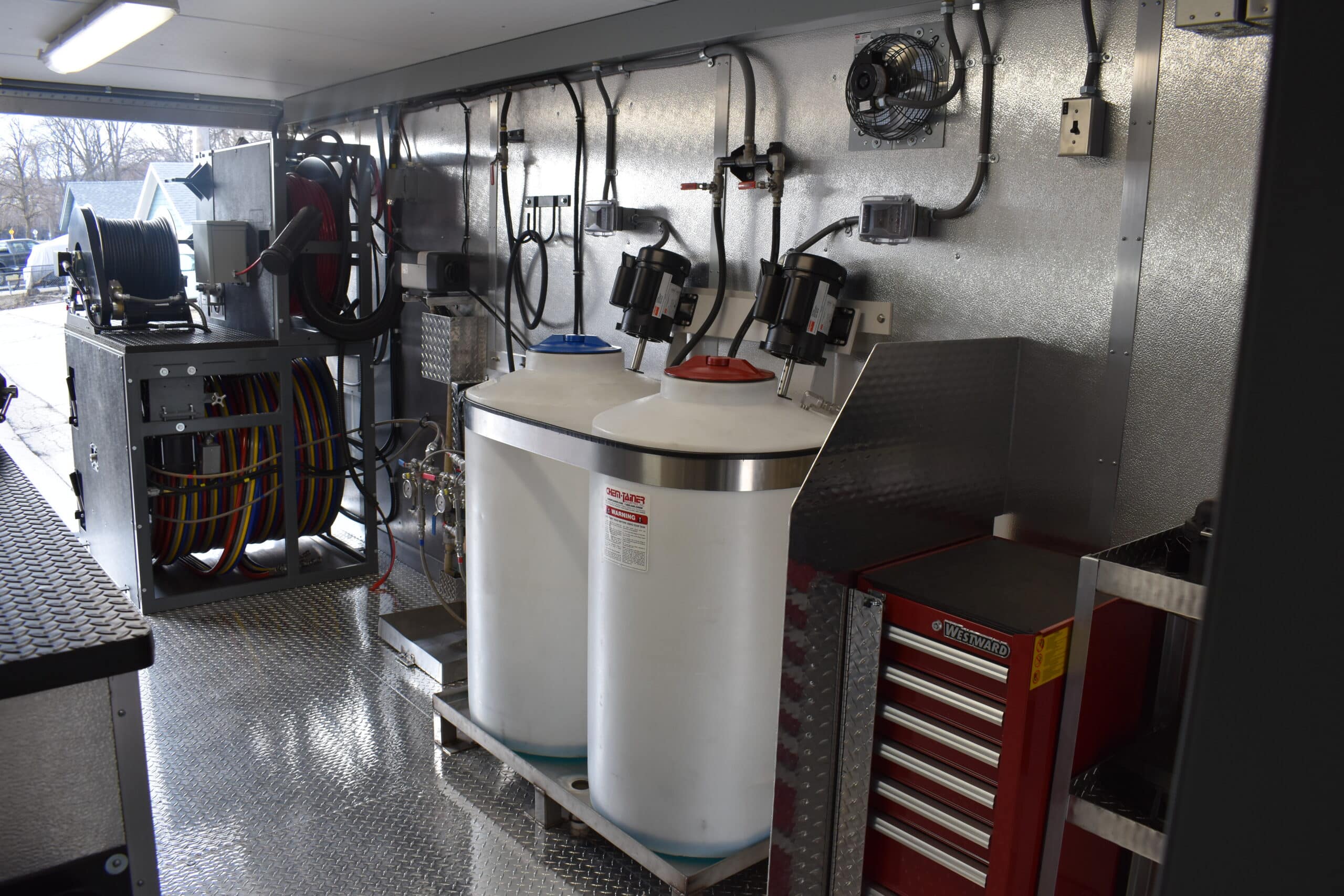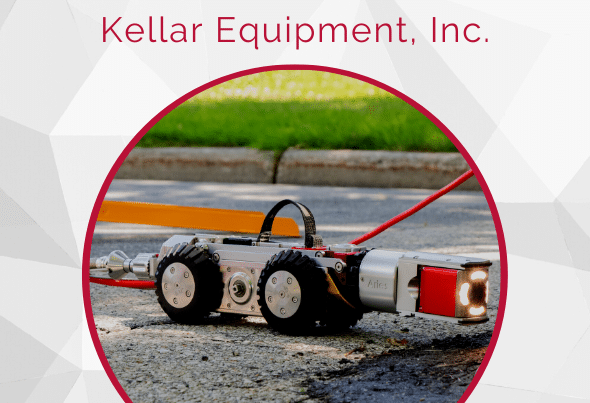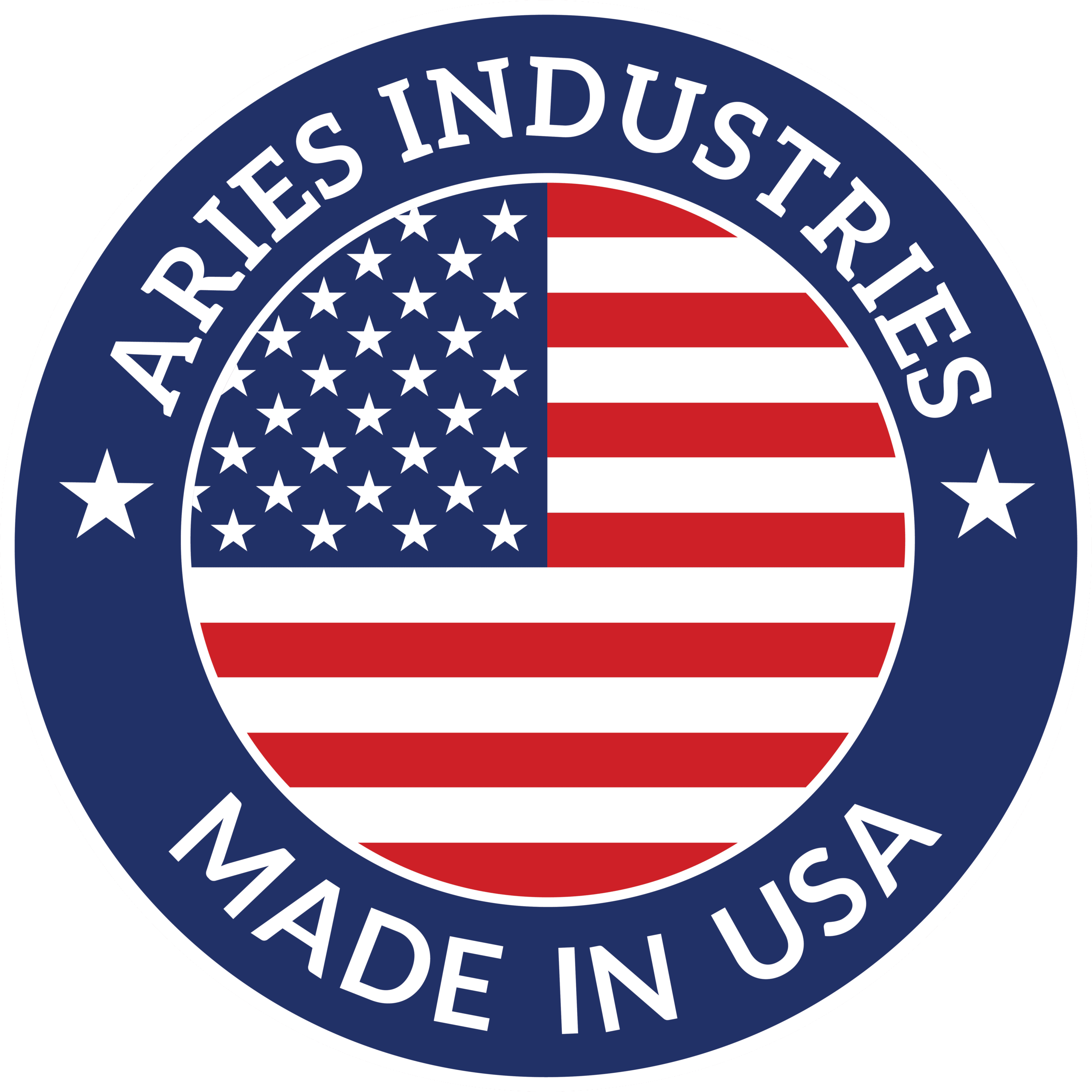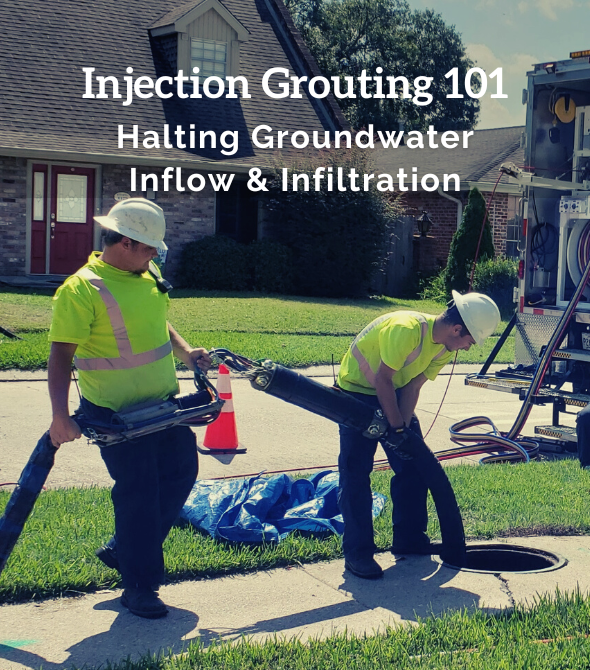Injection grouting to stop groundwater inflow and infiltration is a cost-effective solution many municipalities turn to when faced with this issue. But what is groundwater inflow and infiltration and how does injection grouting solve the problem? Let’s start with some definitions.
What is Groundwater Infiltration?
Groundwater inflow and infiltration into sewer pipelines refer to the unintentional entry of groundwater into the sewer system. While sewers are designed to carry wastewater from various sources, they are not intended to handle large volumes of groundwater.
Groundwater Inflow: Groundwater inflow occurs when water from the surrounding soil and subsurface enters the sewer system through direct connections, such as leaky manhole covers, damaged pipes, or improperly sealed joints. Inflow typically happens during heavy rainfall or when the water table is high. It is a relatively rapid and noticeable entry of water into the sewer system.
Groundwater Infiltration: Groundwater infiltration refers to the slow seepage of groundwater into sewer pipelines through cracks, defects, or porous materials. Over time, groundwater can penetrate sewer pipes through deteriorated or damaged sections. Infiltration is a more persistent issue and can occur even when there is no rainfall or during dry periods.
The Challenge of Groundwater Infiltration
Both groundwater inflow and infiltration pose challenges for sewer systems:
- Increased Flow: The entry of groundwater into sewer pipelines adds to the overall flow within the sewer system, which can exceed its capacity. This extra water can overload the system, leading to backups, surcharges, or overflows. It reduces the system’s hydraulic efficiency and can cause damage to infrastructure.
- Treatment Costs: Groundwater entering the sewer system increases the volume of water that needs to be treated at wastewater treatment plants. Treating this excess water adds to the operational costs of the treatment facilities.
- Environmental Impact: If excessive groundwater enters the sewer system, it can overwhelm the treatment capacity, leading to the discharge of partially treated or untreated wastewater into receiving bodies of water, causing environmental pollution.
What is Injection Grouting?
Injection grouting is a soil sealing process with a two-component chemical grout injected under low pressure through joints and pipe defects. The grout travels into soils and voids around mainline pipe, laterals, lateral connections, manhole structures to stop leaks, stabilize soils and control infiltration. The sealing is achieved by filling voids between the soil grains on the exterior of the structures creating a waterproof barrier. Grout mixes, additives and grouting techniques provide long lasting repairs.
Why Choose Injection Grouting?
According to NASSCO, injection grouting is the most cost-effective trenchless technology and has been used successfully for more than 60 years by many utilities across North America.
As a holistic approach at all four points of entry – mainlines, laterals, service connections, and manholes – injection grouting will extend the service life of sewer pipelines, reduce flow to treatment plants, maintain system capacity, decrease the frequency of cleaning, and minimize the cost of water treatment.
How Does Injection Grouting Work?
Injection grouts do not stop sewer leaks simply by filling joints and cracks. Instead, grout is forced under pressure through joints and cracks and into the surrounding soil where it gels with the soil to form a waterproof mass which cannot be pushed back into the sewer system. Once injected into soil, the grout cures to create an effective, long lasting water barrier with a half-life of 362 years (as determined by the Department of Energy).
The key to the successful use of injection grout is in choosing the right grout mixes and pumping procedures to ensure that the void in the soil surrounding the joint is properly filled.
Mainline Grouting
Mainline grouting is executed using a grout truck, inflatable mainline packer, and a two-component chemical grout. Closed-circuit television (CCTV), such as Aries Industries Pathfinder Inspection System is used inside the pipe to locate the joint, defect or crack to be tested and/or injected, and strategically positions the packer in place. From the grout truck, an operator controls all aspects of the project. It is important to air test all joints and to seal those that fail. Joints that fail the air pressure test can immediately be injected and sealed.
After the joint or defect is sealed, a post-air pressure test is performed to confirm the seal. Once documented, the packer is deflated and moved to the next joint or defect in the pipe to repeat this process. Residual cured grout left behind in the pipe will breakdown as it cycles through the system.
Service Laterals and Connections from the Mainline
Lateral grouting is completed much like mainline grouting, except the packer has an inflatable bladder that extends a specified distance up the lateral connection from the mainline. The top, ribbed portion of the lateral bladder expands, seating against the pipe wall, while the remaining length expands less than the diameter of the pipe to create a thin annulus for the grout to travel. Grout is pumped under pressure through the defects into the surrounding soils forming an impermeable waterproof barrier, while stabilizing the pipe in the sewer trench. After the lateral connection and defects are sealed, a post-air pressure test is performed to confirm the seal. Once documented, the packer and lateral plug are deflated and moved to the next lateral connection in the pipe to repeat this process. As an added benefit, lateral grouting is used to seal the annular space in relined pipes after lateral reinstatements. Below is a video, produced by NASSCO to illustrate this process, among other possible methods of pipe rehabilitation.
Equipment Used for Injection Grouting to Stop Groundwater Inflow and Infiltration
Grout Truck
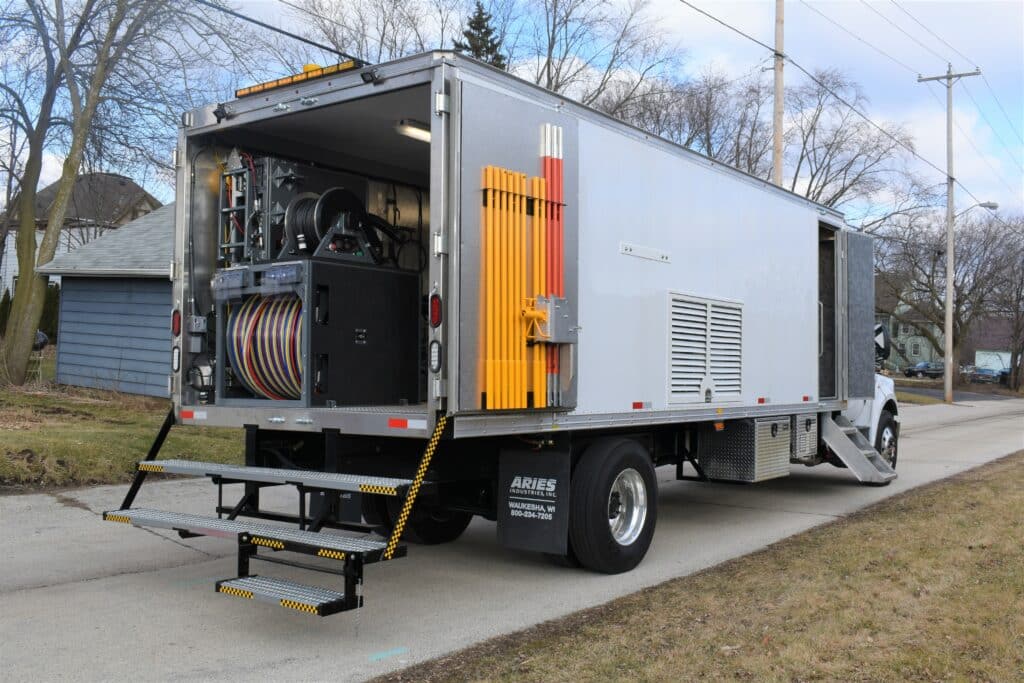 As the hub and control center for injection grouting, it is important to carefully select a grouting system truck. Aries is the leading manufacturer of standard and custom-built chemical grouting systems to halt ground water infiltration into sewer mains and at lateral connections. Vehicles are custom-built or retrofitted to include all the equipment necessary for injection grouting:
As the hub and control center for injection grouting, it is important to carefully select a grouting system truck. Aries is the leading manufacturer of standard and custom-built chemical grouting systems to halt ground water infiltration into sewer mains and at lateral connections. Vehicles are custom-built or retrofitted to include all the equipment necessary for injection grouting:
- High-power winches to move the packer between joints quickly
- 800′ grout house for multiple run set-ups from a single entry point
- High-volume, electric CAT triplex pumps for precise grout delivery
- 60-gallon grout tanks with continuous-duty mixers for fast mixing of the chemical
- Simple, push-button operation
- Easy to read gauges for information on flows and pressures
- Complete TV inspection system to monitor the grouting process
Mainline and Lateral Packers
Packers are used in the collection system to grout mainline joints, laterals, and lateral connections. Mainline packers are available in a range of sizes from 6” to 144” and lateral packers in a range of 6” to 30.”
For more information on packers contact:
Logiball
logiball.com
800.246.5988
Chemical Grout
Chemically activated grout can travel anywhere water can travel, and has controllable set times from seconds to hours. Once injected into soil, the chemical grout cures to create an effective, long lasting water barrier.
For more information on chemical grout contact:
Avanti
avantigrout.com
800.877.2570
Injection grouting is a highly effective technique for resolving groundwater infiltration in mainline and lateral pipes. By sealing leaks and cracks in the pipe system, injection grouting can improve the overall performance of the system, reduce treatment costs, and extend the life of the system.
For guidance in obtaining injection grouting equipment and supplies, connect with a member of our experienced sales team at: 800-234-7205 or at www.ariesindustries.com/contact/.



